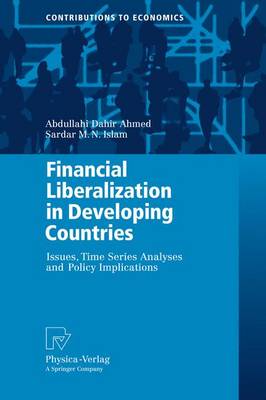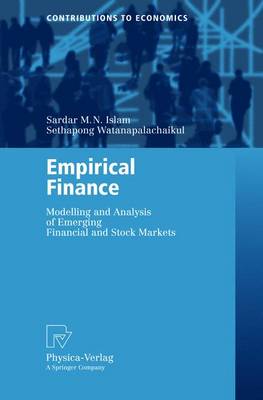Contributions to Economics
2 total works
Financial Liberalization in Developing Countries
by Abdullahi Dahir Ahmed and Sardar M. N. Islam
Published 1 January 2009
The recent global ?nancial crisis has made ?nancial liberalization a topic of great academic and practical interest. This book makes new contributions to the topic by combining fact-?nding, empirical analysis, and theory to examine the relationship between ?nancial liberalization and economic growth. Among its contributions, the book provides detailed country assessments on the effects of ?nancial liberalization, including its striking impact on the banking sector. Although an important goal of ?nancial deregulation has been to help ?nancial institutions better perform their role in intermediating resources, the book models how deregulation may fail to achieve that goal in countries with underdeveloped ?nancial markets and institutions. For that purpose, the book draws on actual experience in Kenya, Malawi, Botswana, and Thailand. This book should constitute important reading for students of ?nancial economics, researchers and general academics, ?nancial practitioners, policymakers, and teachers of economics. North Carolina, USA Steven L. Schwarcz December 2008 Stanley A. Star Professor of Law & Business, Duke University Founding Director, Duke Global Capital Markets Center Durham vii Abstract and Preface The latest global ?nancial and economic crisis of 2008 shows the need to - examine the desirability of ?nancial liberalization and the basis for the view that ?nancial deregulation by itself cannot be considered as a substitute for better economic management. The literature on ?nancial liberalization has identi?ed various mechanisms through which removing controls on interest rates may impact economic growth.
This book makes two key contributions to empirical finance. First it provides a comprehensive analysis of the Thai stock market. Second it presents an excellent exposition ofhow modem econometric techniques can be utilised to understand a market. The increasing globalisation of the world's financial markets has made our un derstanding of the risk-return relationship in a broader range of markets critical. This is particularly so in emerging markets where market depth and liquidity are major issues. One such emerging market is Thailand. The Thai capital market isof particular interest given that it was the market in which the Asian financial crises commenced. As such an understanding ofthe Thai capital market via study of the pre and post-crisis periods enables one to shed light on one of the major financial markets events of recent times. This book provides a quantitative analysis of the Thai capital market using some very useful and recent econometric techniques. The book provides an over view of the Thai stock market in chapter 2. Descriptive statistics and time series models (moving average, exponential smoothing, ARIMA) are presented in chap ter 3 followed by market efficiency tests based on autocorrelations in chapter 4. A richer set of models is then considered in chapters 5 through 8. Chapter 5 finds a cointegrating relationship between macroeconomic factors and stock returns.

